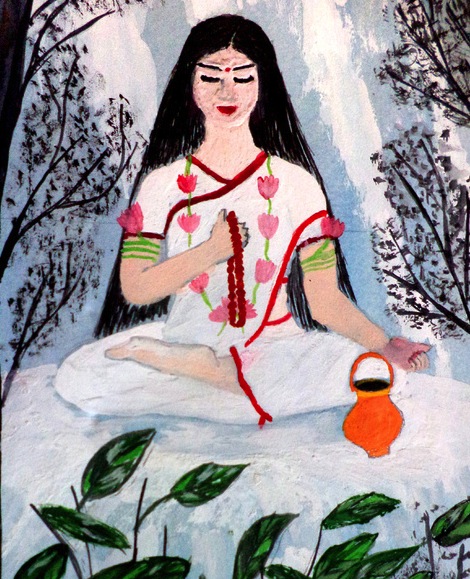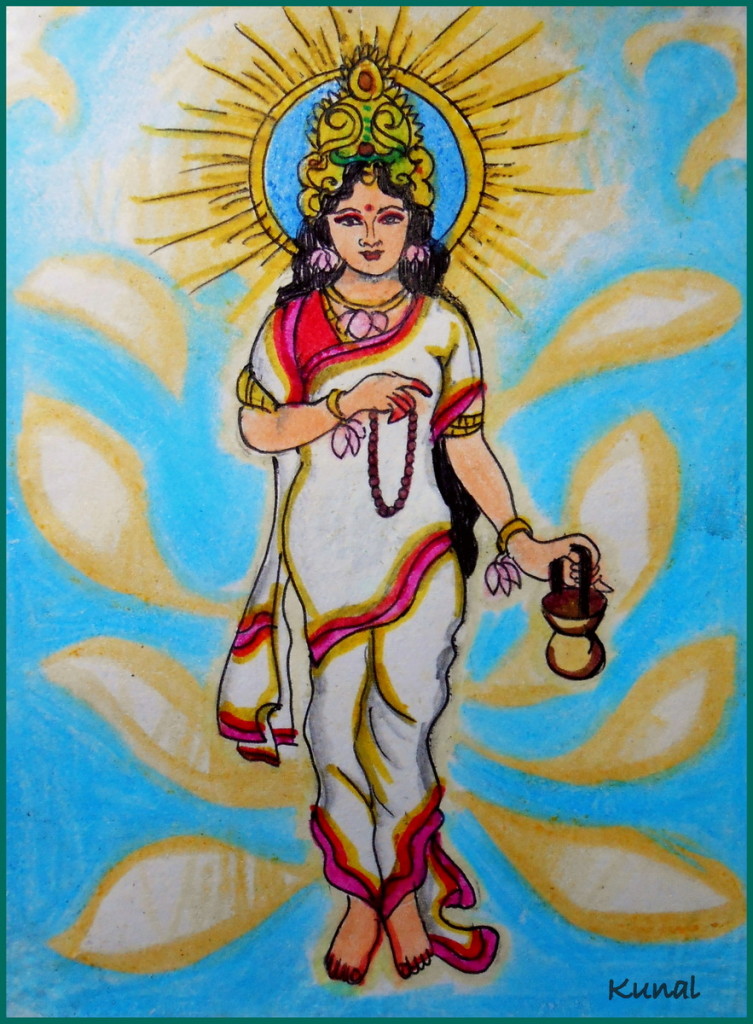On shukla dwitiya, the second tithi (lunar phase) of the waxing Moon this month, we celebrate the second day of Navaratri. In some areas this marks the second day of Durga worship, in places where Durga, Lakshmi, and Sarasvati receive three days of honor each. In the nine-forms-of-Durga tradition, the second day of Navaratri is dedicated to Goddess as Brahmacharini, she who practices penance.
A form of Parvati and Durga, Brahmacharini is the aspect of the goddess who endured tapas or austerities (penance) to win the heart of Lord Shiva (representative of sublime consciousness). As he was an ascetic dedicated to austere meditations in solitude, the high-born Parvati forsook her father’s wealthy abode and chose the sadhu life of self-discipline and renunciation in order to attain spiritual growth. She went to live in the forest, enduring the elements, forgoing food and water, and meditating for eons.
Brahmacharini is depicted in bare feet, holding a japa mala (prayer beads), and a kamandal (a simple water-pot, often carried by sadhus), and wearing rudrakshas (the bead related to Shiva and renunciation). Although fasting is a suitable practice for all nine days of Navaratri (some fasts include milk or milk and fruit), it is especially potent to offer oneself to Goddess by fasting today.
By worshiping Brahmacharini through simple offerings, prayer, and our own self-discipline, she blesses us with emotional and spiritual strength, and the ability to persevere through hardships. She represents and offers us loyalty, devotion, and spiritual growth and wisdom. She rules the planet Mars (Mangala), the planet of strength and courage, who assists us in overcoming weakness and practicing yogic discipline. The term brahmacharini also refers to female renunciates in the Hindu faith, who choose a life of tapas (austerity) and dedication to the Lord, rather than worldly life.


